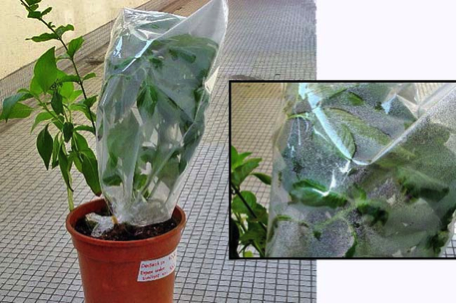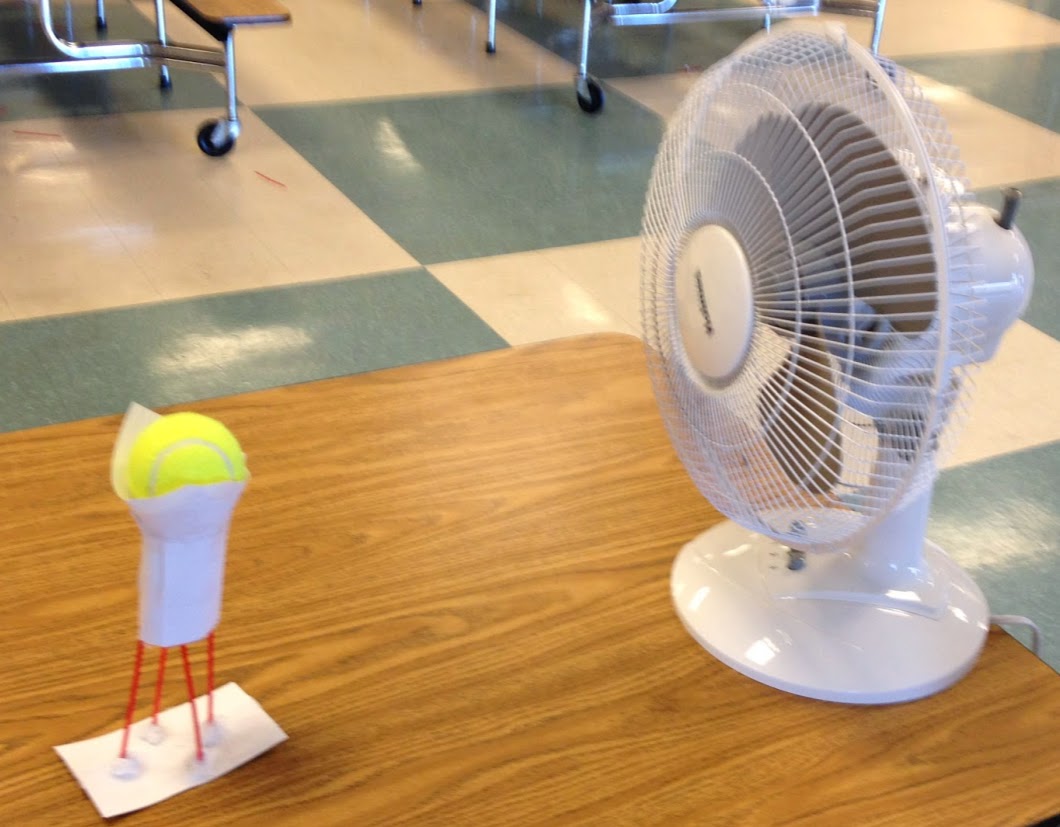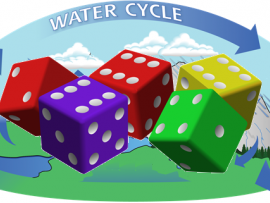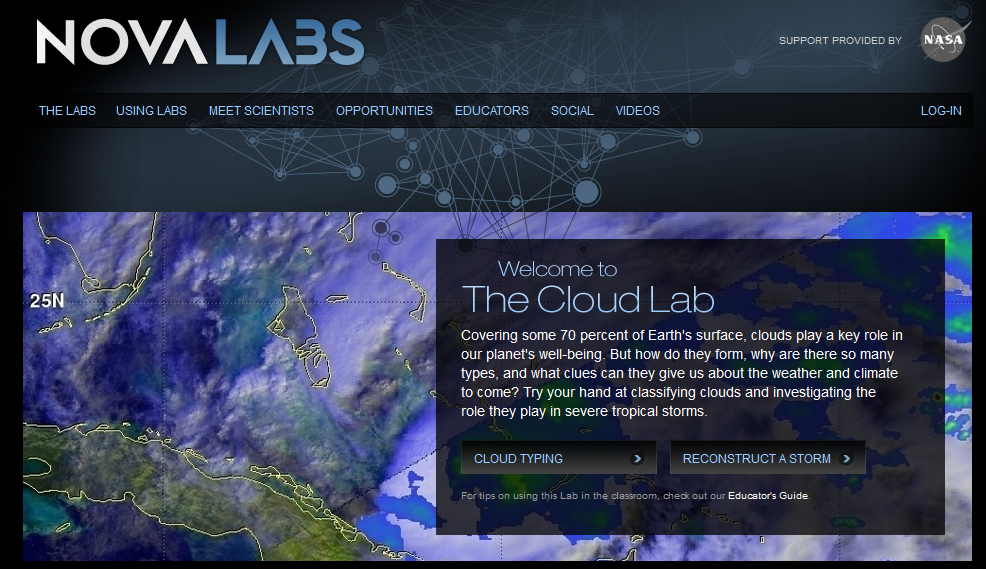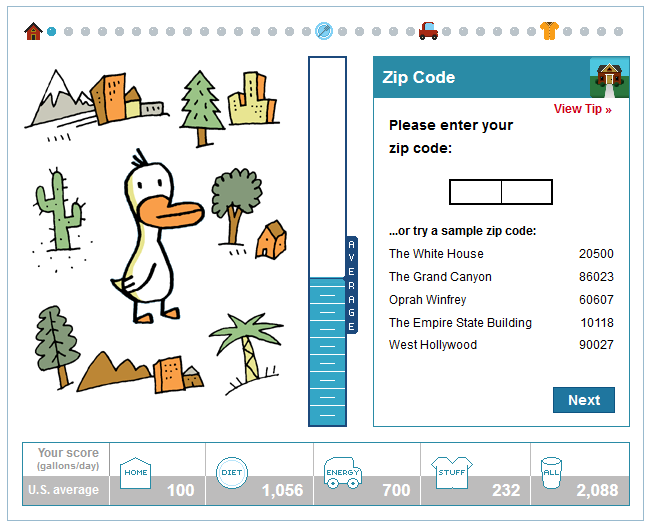Rain EnGAUGE Activities Menu
Erosion and Landslides Lab
Have students experiment with how much precipitation will cause a landslide under various conditions. This is written as a classroom lesson plan with presentation and teacher guide, but could be used with just the lab instructions and data sheet for an informal setting.
URL: http://gpm.nasa.gov/education/lesson-plans/landslides-erosion
Activity Type: experiment / hands-on
Age Group: grades K-5, 6-8
Materials Needed:
- sand/soil/gravel
- spray bottles
- trays/orange juice containers
- plastic tubs
- wooden sticks/shims
- nylon stockings or mesh
Materials in Kit: spray bottles, wooden shims, and mesh, enough to make six landslide lab set-ups
Estimated Time: 15 – 30 minutes, depending on age level and freedom given to experiment
Edible Model of GPM
Use common snack foods to engineer your own model of GPM, while learning about the parts needed in a satellite.
URL: http://gpm.nasa.gov/education/lesson-plans/survivor-gpm
Activity Type: hands-on / reading
Age Group: grades K-5, 6-8
Materials Needed: (suggestions – feel free to use other foods you have available)
- graham crackers
- frosting
- pretzel sticks
- marshmallows (small and large)
- copies of reading about GPM (optional – part of lesson capture sheet)
Materials in Kit: none - perishable
Estimated Time: 15 – 20 minutes
Paper Model of GPM
Cut, fold and glue your way to a model of the GPM Core Observatory (a bit more sophisticated than the edible model above). The accompanying information sheet has details about the systems in the satellite, math connections and additional engineering challenges.
URL: http://gpm.nasa.gov/education/interactive/gpm-core-observatory-paper-model
Activity Type: hands-on
Age Group: grades 6-8, 9-12
Materials Needed:
- cardstock and printer
- scissors
- paper clips – (large size)
- toothpicks (preferably round)
- glue – tacky glue is best
Materials in Kit: copies of the model on cardstock – quantity dependent on your expected audience size
Estimated Time: 30 – 40 minutes
GPM Activities Pages
Label and color a GPM water cycle droplet, match up the parts of the satellite with what they do, and do a word search for vocabulary related to the satellite. Could be a stand-alone activity, or combined with either the paper or edible model above.
URL:
GPM Satellite Labels and Word search
Water Cycle Coloring Activity
Activity Type: paper & pencil
Age Group: grades K-5, 6-8
Materials Needed:
- photocopies
- crayons/markers/colored pencils
Materials in Kit: n/a
Estimated Time: 10-15 minutes
Freshwater Availability
Show students that even though Earth is the water planet, very little of that is fresh water and easily accessible. (Could also be used as part of evening’s introduction, or combined with the rain gauge activity.)
URL: Two variations: http://gpm.nasa.gov/education/lesson-plans/freshwater-availability-classroom-activity and http://gpm.nasa.gov/education/lesson-plans/freshwater-availability-speakers-toolkit
Activity Type: demonstration / hands-on
Age Group: all grades as demonstration
Materials Needed:
- eye dropper
- medicine cup
- larger cup / graduated cylinder
- water
Materials in Kit: one set of eye dropper, medicine cup and graduated cylinder to use as a demo
Estimated Time: 10 minutes
Make a Rain Gauge
An engineering challenge – how does one measure rain accurately? Students will build and test their own rain gauge out of simple recycled materials. After the activity, you might have participants visit http://www.cocorahs.org and explore today’s rain data in your area, as reported by citizen scientists. Maybe they’ll even want to sign up to join the network themselves!
URLs: Survivor: Earth version (part of a ten-lesson series): http://pmm.nasa.gov/education/lesson-plans/measuring-precipitation
Version including freshwater availability introduction: http://gpm.nasa.gov/education/lesson-plans/rain-gauge-activity
Activity Type: hands-on / computer optional
Age Group: grades 6-8, 9-12, possibly also 3-5
Materials Needed:
- empty plastic bottles or plastic cups
- scissors
- permanent markers
- rulers
- tape
- graduated cylinders or measuring cups
- watering can/spray bottle for testing (optional)
Materials in Kit: graduated cylinder
Estimated Time: 15-30 minutes
STEM Careers
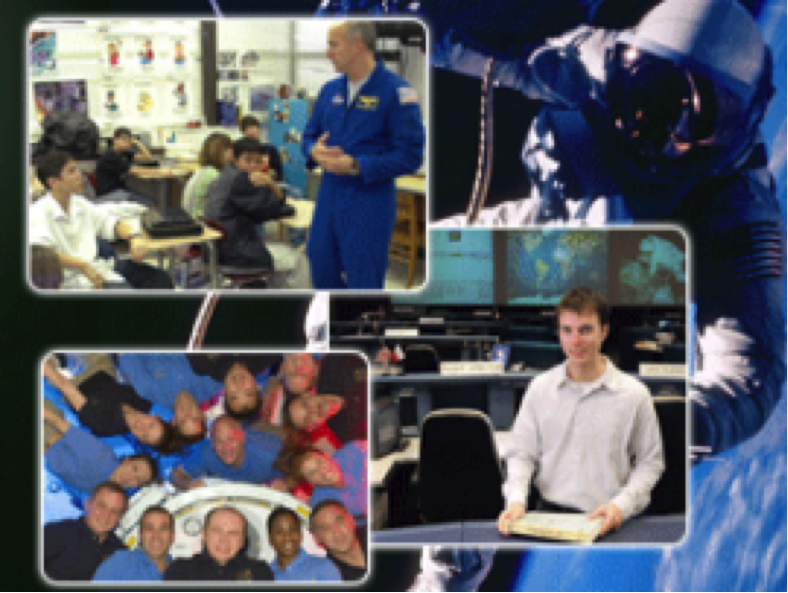
A PowerPoint Presentation with Faces of GPM videos (highlighting scientists and engineers working on the mission) plus links to online aptitude/interest tests and an exploration of STEM careers – best suited to students working through at their own pace. Another option is a NASA Digital Learning Network module about STEM Careers – details and information about requesting a DLN event at the link below.
URL: http://pmm.nasa.gov/education/interactive/stem-careers-exploration
DLN link: http://www.nasa.gov/offices/education/programs/national/dln/
Activity Type: computer
Age Group: grades 6-8, 9-12
Materials Needed:
- computer lab
- headphones (optional)
Materials in Kit: n/a
Estimated Time: 30 minutes
Water Cycle Demonstrations
Show students (or let them try for themselves) examples of evaporation, condensation (including making a cloud in a bottle), transpiration, infiltration and why freshwater rain comes from saltwater.
URL: From the Exploring the Water Cycle lesson http://gpm.nasa.gov/education/lesson-plans/exploring-water-cycle
Just the demo instructions: Water Cycle Demo Instructions.pdf
Activity Type: hands-on
Age Group: works for all as demos, but best for 6-12 if students will try themselves
Materials Needed:
- variable, depending on which demos you choose – please see link for a detailed materials list
Materials in Kit: n/a
Estimated Time: 20-30 minutes to complete all demonstrations
Build a Hurricane-Resistant Tower
Use everyday materials to build a tower that can hold up a tennis ball while resisting the force of wind from a fan. (If you want a real challenge, add a spray bottle to represent rain!) Make it a contest – who can built the tallest, strongest tower!
URL: http://pmm.nasa.gov/education/interactive/building-hurricanes-engineering-design-challenge
Activity Type: hands-on
Age Group: grades 3-5, 6-8. 9-12 (can change the requirements/materials for different ages)
Materials Needed:
- index cards
- straws
- tape/mailing labels
- string
- craft sticks
- pipe cleaners
- tennis balls
- fan (for testing)
Materials in Kit: tennis balls, enough for 6 groups
Estimated Time: 20-30 minutes, more if you allow re-design and re-testing
Water Cycle Dice Game
Journey through the water cycle using dice to tell you what happens next.
URL: https://pmm.nasa.gov/education/interactive/water-cycle-dice-game
Activity Type: interactive activity / game
Age Group: grades K-5, 6-8
Materials Needed:
- dice or other cubes that can be labeled
- instructions and/or capture sheet – see several versions at the link above
Materials in Kit: n/a
Estimated Time: 20-30 minutes
Book Read-Aloud or Browse
Choose a selection of picture books, longer books, or graphic novels to read aloud (or have students take turns) or just spread a bunch out on a table and let kids explore! See our list of suggested books, or check with your local librarian to find books related to rain, snow, weather and climate, and storms.
URL: Books on Precipitation Education.pdf
Activity Type: group or individual reading
Age Group: all with different levels of books chosen
Materials Needed:
- selection of books checked out from library – precipitation, weather, hurricanes, etc.
Materials in Kit: n/a
Estimated Time: variable
NOAA Ocean Explorer – Multimedia Discovery Mission about Hurricanes
An interactive module students can use to explore hurricanes and their global impact at their own pace.
URL: http://oceanexplorer.noaa.gov/edu/learning/player/lesson14.html
Activity Type: computer
Age Group: grades 6-8, 9-12
Materials Needed:
- computer lab
- headphones (optional)
Materials in Kit: n/a
Estimated Time: 30-45 minutes
NOVA Cloud Lab
Choose from two options – a module that teaches you about identifying cloud types, or one that allows you to reconstruct the formation of Hurricane Sandy.
URL: http://www.pbs.org/wgbh/nova/labs/lab/cloud/
Activity Type: computer
Age Group: grades 6-8, 9-12
Materials Needed:
- computer lab
Materials in Kit: n/a
Estimated Time: 30 – 45 minutes
Calculate your Water Footprint
Have students think about how much water they use and the impact that has on the planet.
URL: Option 1: (requires creating a free account)
http://environment.nationalgeographic.com/environment/freshwater/change-the-course/water-footprint-calculator/
Option 2: (no account needed) http://www.gracelinks.org/1408/water-footprint-calculator
Activity Type: computer
Age Group: grades 6-8, 9-12
Materials Needed:
- computer lab
Materials in Kit: n/a
Estimated Time: 15-20 minutes



